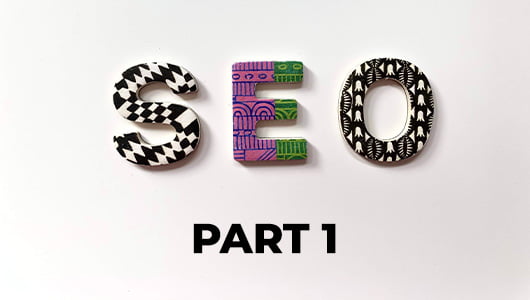Today’s search engine requirements are unlike before and much has changed just within the span of three years. Since then, we have seen brands falling out of search results as they were unable to keep up with search engine’s ever changing search algorithms.
What is the problem with changing search algorithms?
A change in search algorithm can mean better search (and optimised) results for consumers but it also means havoc for your brand, especially if you capitalised heavily on specific SEO requirements.
Should I capitalise on specific SEO requirements?
It is almost never a good idea to focus on specific requirements as these requirements change from time to time as part of a search optimisation process by search engines. A good example is keyword spamming – a very popular way of getting to the top back then which is heavily penalised today.
What should I look out for in modern day SEO?
There are three (3) main areas to look out for when it comes to search engine optimisation today: content relevance, context relevance and technical relevance. These areas will be covered in detail over three blog posts that will be published over a couple of days.
Part 1 of 3: Content Relevance in SEO
Content relevance are one of the key areas related to the content of your website as most search engines do take content very seriously. For example, duplicated content are frown upon while unique and original content thrives on search engines.
The below are some areas related to content relevance for your brand when it comes to search engine optimisation.
Article Text and Image
Text has always been a major part of SEO since its early days and remains true today. It is important for your written article content to contain the desired keywords for search engines to pick it up at ease but you do not want to spam them across the screen!
Images (and even videos) are also a growing influence on SEO. With the help of image and video search on popular search engines such as Google, you would definitely want your photos to show up in the results and you can do that by optimising the title tag and file name of your image.
Key takeaway: Not all text are made equal in SEO. Header text (or <h1>, if you’re familiar with basic HTML) are more significant than say, a <h2> or paragraph text. As such, you want to place your keywords wisely for maximum results. Text in images don’t count either.
Word Relevance
This is an interesting one. Modern search engines have become more intelligent where it does not read content word for word. It has evolved to also understand words that are relevant to keywords. For example, an article with the keyword ‘fishing’ will have relevance to ‘sea’, ‘boat’ or ‘fish’; and you can use them without fearing that you will lose out on SEO relevancy.
Key takeaway: This is a great way to score on SEO without having to spam your keywords throughout an article. There are various keyword analysis tools out there that you can use to find out what are the relevant words to your keywords.
Article Length
There are many debates on this one but from experience, lengthier articles do better as they are presumed to have more context, depth and relevance. It is said through research that the ‘optimum’ length for search engines are between 1,000 to 1,200 words.
Key takeaway: Let’s face it, 1,200 words is too much to take in for human readers. Have a mix of content length between articles to have that balance for your readers. Shorter and snappier articles also makes it good for social sharing which also helps in search engine optimisation (we’ll cover that later!).
Meta Data
Without the technical jargons, meta data are simply descriptions of your website that includes a title, short description and keywords that helps search engines in understanding your website’s content at a glance. These meta data are typically written in basic HTML tags such as <title>, <meta name>, <meta property>, <link rel> and more!
Key takeaway: While the significance of meta data is on a decline, it is still a relevant point to take note of as it ultimately used to describe your website whether as a snippet on search engine results or on an embedded link unto social media platforms.
Domain Name
Your website’s domain name, or URL, helps your consumers, readers or search engines identify you on the web. It also means that instead of having a domain name like www.yourbrand.com, one like www.searchterm.com can potentially perform better on search results. This can be particularly helpful if your brand is lesser known.
Key takeaway: It’s not compulsory to have a domain name with your keywords but it does help you get there especially when combined with all other factors discussed.
Voice Compatibility
Voice search is slowly becoming a norm especially with the introduction of smart watches and other portable computing devices – especially among mobile consumers. Having your content easily readable by voice readers will get you a better shot in appearing on voice search results.
Key takeaway: Not all brands will benefit from voice search today but if you are one that thrives on mobile, having your content in conversational languages will definitely help!




